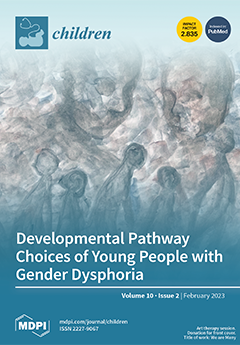Objectives: This study aimed to examine the associations between warm and harsh parenting and adolescent well-being, and the mediating effects of self-kindness and self-judgment, in relationships. Moreover, this study investigated developmental differences across three adolescence stages (early, middle, and late).
Methods: In total,
[...] Read more.
Objectives: This study aimed to examine the associations between warm and harsh parenting and adolescent well-being, and the mediating effects of self-kindness and self-judgment, in relationships. Moreover, this study investigated developmental differences across three adolescence stages (early, middle, and late).
Methods: In total, 14,776 Chinese adolescents (mean age = 13.53 ± 2.08, 52.3% males), including individuals in early (10–12 years old,
N = 5055), middle (13–15 years old,
N = 6714), and late adolescence (16–18 years old,
N = 3007) participated in this study. All the adolescents rated their levels of warm and harsh parenting, self-kindness and self-judgment, and well-being. Structural equation modeling (SEM) was adopted to examine the mediation model. Multi-group analysis was conducted to investigate differences in the mediation model across the different developmental stages.
Results: Both warm and harsh parenting were related to adolescent well-being through the mediating effects of self-kindness and self-judgment. However, warm parenting exerted a more substantial impact on adolescent well-being. Self-kindness had a more robust mediating effect than self-judgment in relationships. Moreover, harsh parenting had a weaker impact on adolescent well-being in late adolescence than in early and middle adolescence. Warm parenting had a more significant impact on adolescent well-being in early adolescence than in middle and late adolescence.
Conclusions: Overall, warm parenting had a more substantial effect than harsh parenting on adolescent well-being. The findings also highlighted the crucial mediating effect of self-kindness in the relationships between parenting and well-being. Moreover, this study also indicated the importance of warm parenting in early adolescence. Intervention programs should focus on enhancing the level of warm parenting to promote self-kindness in adolescents, in order to improve their well-being.
Full article






